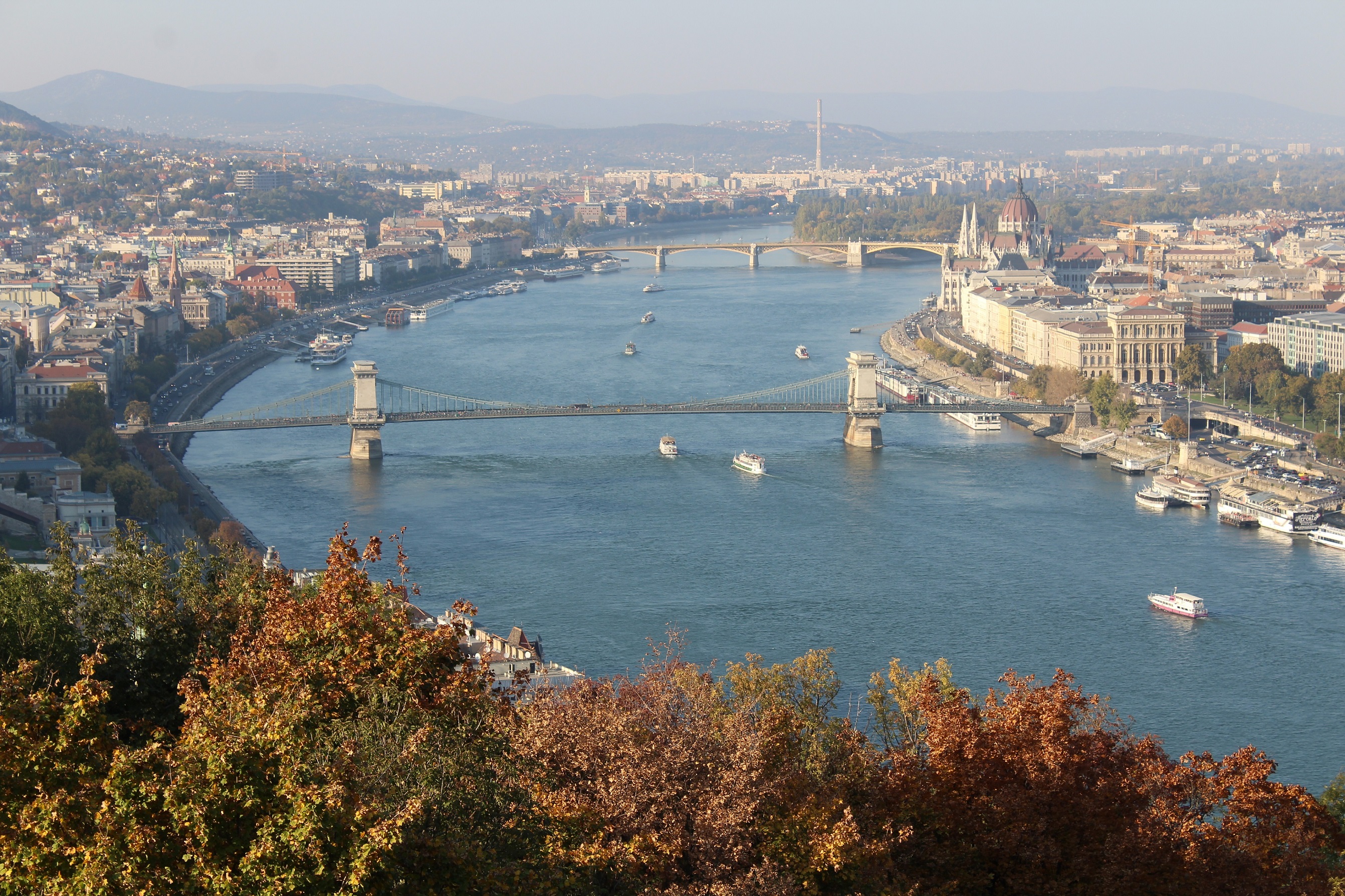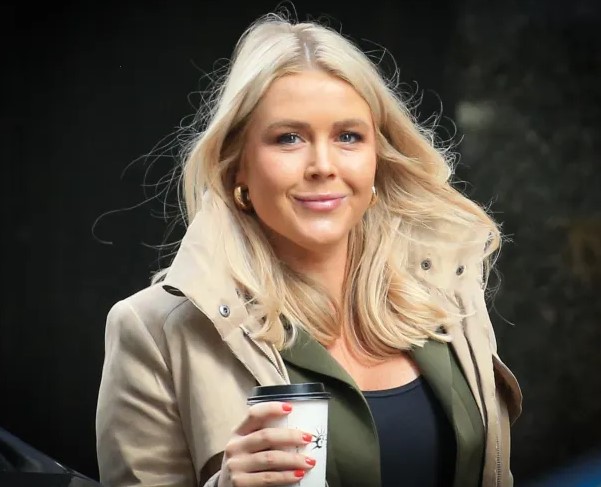.
France
(Sunday), 26 October 2025 Two suspects have been arrested yesterday evening over the theft of precious crown jewels from Paris's Louvre museum. One of the suspects was preparing to travel to Algeria, while it's understood the other was going to Mali. The suspects arrived with a vehicle-mounted mechanical lift to gain access to the Galerie d'Apollon via a balcony close to the River Seine. The only camera monitoring the exterior wall of the Louvre where they broke in was pointing away from the first-floor balcony that led to Gallery of Apollo. A ladder was leading up to a first-floor window. Two of the thieves entered by cutting through the window with power tools. They cut through the glass of two display cases containing jewels. One in three rooms in the area of the museum raided had no CCTV cameras. French police say the thieves were inside for four minutes and made their escape on two scooters waiting outside at 09:38. Items worth €88m ($102m) were taken from the world's most-visited museum last Sunday. (Source: Daily Mirror - Sri Lanka / BBC - United Kingdom)
October 23, 2025 Amid ongoing negotiations on the country’s 2026 budget, French lawmakers have voted in favor of a fivefold increase on the taxation of tech giants. The amendment would raise the digital services tax on tech giants from 3 percent to 15 percent. It would also lift the global revenue threshold from €750 million to €2 billion - shielding smaller national players from the scope of the tax. The proposal was put forward by Cazeneuve, a member of President Macron’s party. This measure clearly shows that we don’t have to wait for Europe, said Coquerel, a left-wing MP who heads up the finance committee. I urge France to work cooperatively to address U.S. concerns rather than doubling down on these discriminatory taxes, Republican U.S. representative Smith, who is chairman of the tax-writing Ways and Means Committee, wrote in a post on X. The 2026 budget will go to a plenary vote in the National Assembly on Nov. 4. (Source: Politico - U.S.)
Germany
23 October 2025 During a summit in London, German Chancellor Merz bows to pressure over immigrants: ‘They’re indispensable.’ Merz’ comments came after some casual remarks of his on migration on October 14 had caused an uproar on the German Left. Many of these also shape the public image of our cities. That is why so many people in Germany and other EU countries – and not just Germany – are now simply afraid to move around in public spaces, Merz said. He added: 'This applies to railway stations, subway trains and certain parks. This issue dominates certain areas of our cities which is also causing great problems for our police.' In a survey by pollster INSA for newspaper Bild, 43 per cent of respondents said the urban landscape of their hometowns had taken a turn for the worse since 2015. The areas that cause Germans to feel most unsafe are railway stations (51 per cent), parks (35 per cent) and city centres (30 per cent). (Source: Brussels Signal - Belgium)
21 October 2025 Three armed men stopped a bus on a motorway in Bavaria yesterday at 3:30am, robbing passengers at gunpoint. (Source: Brussels Signal – Belgium)
Lithuania
October 29, 2025 Dozens of balloons carrying illegally transported cigarettes sparked fears for civil aviation and drew rebuke from Vilnius, which described the incursions as a hybrid war tactic 'against the West'. In a statement issued yesterday by the bloc’s top diplomat, Kallas, on behalf of member countries, the EU said it strongly condemns Belarus' 'persistent and provocative actions' after the airborne objects forced Lithuania to close its airports and shut its border with the neighboring nation this week. (Source: Politico - U.S.)
October 21, 2025 Yesterday, prime minister Ruginienė stripped the defense minister Šakalienė of responsibility for the defense industry, after the PM lost trust in her over the defense budget. Ruginienė last week criticized fellow Social Democrat Šakalienė for lobbying on the budget behind the government’s back. (Source: Politico - U.S.)
Poland
23 October 2025 In a heated exchange with his Hungarian counterpart Szijjártó on social media yesterday, Polish foreign minister Sikorski has said he hopes that Ukrainian forces succeed in destroying an oil pipeline that supplies Hungary with Russian oil. Orbán, chief political adviser to Hungarian Prime Minister Viktor Orbán (no relation), reacted by accusing Sikorski of war hysteria and of harming Polish-Hungarian relations. The exchange between Sikorski and Szijjártó had started with Sikorski stating he was proud of the court decision earlier in October to set free a Ukrainian who had been detained on an arrest warrant issued by Germany. He was held for his alleged role in destroying the Nord Stream gas pipelines in the Baltic Sea. 'I am proud of an independent court’s decision that decided that acts of sabotage against an invader are not a crime,' argued Sikorski. Sikorski and Hungary have also been at odds this month over the postponed Budapest summit on the Ukraine war between the Russian President Putin and US President Trump. Poland’s foreign minister warned the Russians that he could not guarantee Putin’s safe passage through Poland’s airspace. Szijjártó reacted to that by criticising the decision. PM Orbán is arguing for peace initiatives and the Poles are backing Ukraine. (Source: Brussels Signal - Belgium)
21.10.2025 Poland, Sweden signed defense pact to boost arms cooperation. Officials from both countries met in Warsaw for the Polish-Swedish Defense Industry Forum. Memorandum aims to enhance cooperation in defense sectors, expand joint initiatives in arms production and military training. (Source: Anadolu Agency - Turkey)
Sweden
22/10/2025 Ukrainian and Swedish leaders signed a cooperation deal, which would see Sweden buy fighter jets from its domestic company Saad before exporting them to Ukraine. They eye export deal for up to 150 fighter jets. (Source: France 24)
Russia
October 29, 2025 11:13am EDT Russian president Putin hails successful test of nuclear-powered underwater torpedo as a major step in the country’s strategic weapons program. ’For the first time, we managed not only to launch it with a launch engine from a carrier submarine, but also to launch the nuclear power unit on which this device passed a certain amount of time,’ Putin said. The Poseidon’s power significantly exceeds the power of even our most promising Sarmat intercontinental-range missile, he said, referring to Russia's SATAN II model. The Poseidon, first unveiled in 2018, is designed to travel across oceans at high speeds using nuclear propulsion and carry a massive warhead. Putin also cited progress on other strategic systems, including the Burevestnik nuclear-powered cruise missile, which Moscow says can fly indefinitely and evade missile defenses. Russian officials reported a successful test flight of the Burevestnik earlier in the week as part of a broader demonstration of nuclear readiness. The successful Burevestnik test traveled over 8,700 miles, Russia said. U.S. and NATO officials have not independently confirmed the Poseidon test. The Pentagon declined to comment. (Source: Fox News - U.S. / „Reuters (United Kingdom) and The Associated Press (U.S.) contributed”)
October 29, 2025 2:18 PM GMT Ukraine targeted Russian energy infrastructure with drones and sent several drones towards Moscow for the third straight night. Its forces had struck Russia's Mariysky refinery in the Mari El region, another in the village of Novospasskoye in the Ulyanovsk region, and a gas plant in the town of Budyonnovsk in the southern Stavropol region, Ukraine's General Staff said. In the Budyonnovsk zone Kyiv attacked the Stavrolen chemical plant, a part of Russia's Lukoil group. Stavrolen is one of Russia's main producers of polyethylene and polypropylene. Russian air defence units destroyed a total of 100 Ukrainian drones overnight, including six over the Moscow region, and the rest over 11 regions and the Black Sea peninsula of Crimea, the Russian defence ministry said. Three of Moscow's four airports, and several others around the country, were closed at some point in the night for safety reasons. (Source: Reuters - United Kingdom)
(October 27, 2025) / Oct. 23-26, 2025 Based on open sources, Mediazona ['independent' Russian media outlet] and BBC News Russian, together with volunteers, have verified the names of 140,101 Russian fighters killed in Ukraine, including 15,562 mobilized soldiers. The typical growth rate is 2,000-2,500 new names every two weeks. (Source: Conflict Intelligence Team - headquarters: Tbilisi, Georgia, since 2022)
(October 27, 2025) / Oct. 23-26, 2025 ' An elderly resident of the city of Krasnoyarsk, K., was abducted on the street and forced under threat of violence to sign a contract with the MoD as part of a unit composed of convicts. K. said that on March 18, 2025, he was stopped by unidentified men who offered him to enlist voluntarily. After he refused, they forced him into a car and took him to a draft office, where he was coerced into signing a contract. He was then taken to a Civil Registry Office, where he was forcibly married to an unknown woman so that she could receive his military payments. His bank card was also confiscated. After that, K. was sent to serve attached to the 15th Motorized Rifle Brigade, which is fighting near the town of Pokrovsk and is among the units with the highest casualty rates '. (Source: Conflict Intelligence Team - headquarters: Tbilisi, Georgia, since 2022)
(October 27, 2025) / Oct. 23-26, 2025 Russia’s financial monitoring agency Rosfinmonitoring is adding between 250 and 350 new names each month to its registry of terrorists and extremists. The list now includes 18,771 people. Over the past two years, the share of minors has risen sharply: since July 2025, one in ten new entries has been under 18. The number of Ukrainians has also increased, including prisoners of war and civilians convicted in Russia under 'terrorism'-related charges. As of July 2025, roughly one in five new additions is Ukrainian. The Southern District Military Court sentenced Ukrainian serviceman Bezkorovainyi of the Azov Brigade to 17 years in a maximum security penal colony. He was convicted of involvement in a terrorist community and undergoing training for terrorism. Prosecutors claimed that Bezkorovainyi joined the Azov Brigade in the fall of 2020 and, for the next two years, served as a tank gunner who 'participated in armed attacks on settlements and shelling of the civilian population.' Bezkorovainyi defended the Azovstal Steel Factory in Mariupol after the start of the full-scale invasion and was taken prisoner in May 2022. (Source: Conflict Intelligence Team - headquarters Tbilisi, Georgia, since 2022)
26 Oct 2025 at 14:51 Russian President Putin hailed the test of a new nuclear-powered cruise missile. The Burevestnik was tested on Oct 21. His military said it flew for about 15 hours, capable of travelling for at least 14,000 kilometres. (Source: Bangkok Post - Thailand)
26 October 2025 6:00am GMT This month, Russia’s Federal Security Service (FSB) accused Khodorkovsky, who now lives in exile in London, and 22 members of Russia’s Anti-War Committee of plotting a coup. According to the FSB, the committee, which was created to oppose Russia’s war in Ukraine, is vying for the violent seizure of power and overthrow of the constitutional order in the Russian Federation. (Source: The Telegraph - United Kingdom)
23.10.2025 AI race: You can maneuver, you can join. (Source: Valdai Discussion Club - Russia)
by Bazlutskaya
October 23, 2025 To Russia, via Cyprus. According to the records reviewed by the reporting team - Russian Secrets, an investigation led by German media outlets NDR, WDR and Süddeutsche Zeitung in collaboration with nine media partners - between 2013 and 2024, companies including Norwegian defense giant Kongsberg, Japanese tech conglomerate NEC and U.S. sonar manufacturer EdgeTech traded with a firm called Mostrello Commercial Ltd. For about a decade, numerous defense companies and maritime suppliers sold sonars, underwater robots, fibre optic cables as well as research vessels and other sophisticated technology worth more than $50 million to the Cypriot entity secretly linked to a Russian defense contractor. The Limassol-based entity was controlled by Strelchenko, a businessman whose Moscow-based companies own vessels and lay under-water cables for the Russian defense department. (All the companies have denied wrongdoing). The equipment was intended for a Russian surveillance system code-named “Harmony,” which relies on a constellation of seabed sensors to detect enemy submarines approaching Russian nuclear weapons located in the Barents Sea, off Russia’s north coast. (Source: International Consortium of Investigative Journalists - based in Washington, D.C., U.S.)
23.10.2025 Russia's position on the Ukrainian conflict remains unchanged, Foreign Ministry spokeswoman Zakharova said, including ensuring reliable neutrality, non-alignment, and Ukraine’s nuclear-free status, its demilitarization and “denazification,” developing solid guarantees for rights and freedoms for the Russian-speaking population, as well as unhindered activities of the Ukrainian Orthodox Church. "This serves as a starting point in our dialogue with the United States and other interested countries seeking to make constructive contributions to the cause of settlement," she stressed. Zakharova said the Russian side does not see any significant obstacles to continuing the process initiated by the Russian and US presidents aimed at aligning political frameworks for resolving the Ukrainian crisis and filling them with concrete results. "Yes, this is difficult and painstaking work, but it must be done through diplomatic efforts and instruments rather than leaks or provocations," she said. (Source: Anadolu Agency - Turkey)
Wednesday 22 October 2025 13:16 BST Russian President Putin today directed drills of the country’s strategic nuclear forces that featured practice missile launches. The Kremlin said that as part of the maneuvers involving all parts of Moscow's nuclear triad, a Yars intercontinental ballistic missile was test-fired from the Plesetsk launch facility in northwestern Russia, and a Sineva ICBM was launched by a submarine in the Barents Sea. The drills also involved Tu-95 strategic bombers firing long-range cruise missiles. Putin emphasized that the maneuvers had been planned in advance. /Source: The Independent - United Kingdom; "Via AP (U.S.) news wire"/
21.10.2025 Trump’s Gaza Peace Deal and Israel’s prospects. (Source: Valdai Discussion Club - Russia)
by Bordachev
October 21, 2025 7:39 PM GMT+2 Russia reiterated its previous terms for reaching a peace deal with Ukraine in a private communique sent to the U.S. over the weekend known as a "non paper" - diplomatic speak for an informal document meant to communicate one party's position to another. The communique reiterated Russia's demand that it take control of all of Ukraine's Donbas region. Russia also reiterated its previous stance in the non paper that no NATO troops be deployed to Ukraine as part of any peace agreement. (Source: Reuters - United Kingdom)
October 21, 2025 1:30 PM GMT+2 Russia said today its conditions for peace in Ukraine remained unchanged since the August summit between U.S. President Trump and Russian President Putin, and that it was unclear when their next meeting would take place. Lavrov told reporters he was surprised by an unscrupulous CNN report which said that the anticipated Rubio-Lavrov meeting had been put on hold for the time being and that unidentified U.S. officials felt that Russia still had a maximalist stance. "I want to officially confirm: Russia has not changed its position compared to the understandings that were reached during the Alaska summit," Lavrov told reporters, adding that he had told Rubio precisely that. Putin's foreign minister of more than 21 years dismissed European demands to simply halt the war without any deeper understanding of how to address the root causes. One of Putin's most important conditions for ending the war is a demand that Western leaders pledge in writing to stop enlarging NATO eastwards. The Kremlin's conditions for long-lasting peace included that Ukraine would remain non-nuclear and non-aligned - not joining the U.S.-led NATO alliance - as well as protections for Russian-speakers in Ukraine. Putin has repeatedly said he is ready to talk about peace. Ukraine and its European allies have long insisted on an immediate ceasefire in Ukraine at current battle lines before peace talks. Moscow has said it wants Ukraine to cede more territory as one of several conditions it has raised for a ceasefire. (Source: Reuters - United Kingdom)
Ukraine
October 26, 2025 at 09:17 am Kyiv and its surrounding region were under air raid alerts for about 1-1/2 hours before the air force called them off at about 0030 GMT. 14 people were injured in Russia’s overnight air attack on Kyiv. (Source: TimesLIVE - South Africa / Reuters - United Kingdom)
October 25, 2025 Ukraine deludes itself and Saab about its prospects. On the surface, Kyiv’s agreement with Saab to build domestic air defense systems inside Ukraine will help it in its war against Russia. In reality, it will make no difference. (Source: The National Interest – U.S.)
By Weichert
Vatican
(Thursday), 23/10/2025 Today, Pope Leo XIV prayed publicly with Britain's King Charles III at the Vatican in a service broadcast live on Vatican media. It was the first joint prayer meeting between the heads of the English and Roman Catholic Churches since English monarch Henry VIII broke with Rome in 1534. The 76-year-old monarch holds the title of supreme governor of the mother church of Anglicanism. It was Charles's first meeting with Pope Leo, who took over as head of the world's 1.4 billion Catholics in May. The king and queen joined an ecumenical service at midday (1000 GMT) in the Sistine Chapel led by Leo and the Archbishop of York, Cottrell, currently the senior cleric of the Church of England. The service, held beneath Michelangelo's spectacular ceiling frescoes, brought together Catholic and Anglican traditions, with the choir from the Sistine Chapel joined by that of Saint George's Chapel, Windsor Castle. In 1961, the late Queen Elizabeth II, Charles's mother, became the first British monarch to visit the Holy See since the split. Charles has visited the Vatican several times and met privately with Pope Francis on April 9, just days before the pontiff's death. The king sent his son and heir William to the funeral and his brother Prince Edward, the Duke of Edinburgh, to Leo's inauguration mass. The religious break between London and Rome remains. The law was changed in 2013 so that marrying a Catholic would no longer disqualify someone from becoming monarch – although they still have to be a Protestant themselves. Unlike the Roman Catholic Church, the Church of England – the mother church of the world's 85-million-strong Anglican community – ordains women and allows priests to marry. Mullally was recently named the first female archbishop of Canterbury, the Church's top cleric, although she has yet to officially take up her post. Charles and Queen Camilla are also set to take part in a service at the Basilica of Saint Paul Outside the Walls in Rome, one of four major papal basilicas, which has historic links with the English crown. The king will be made a "Royal Confrater" of the basilica and presented with a specially designed seat for use by him and future British monarchs. (Source: France 24 with AFP)
NATO
(October 29, 2025) The US still has more troops deployed in Europe than it did before Russia invaded Ukraine in 2022. It is withdrawing some troops from Romania, on NATO’s eastern flank. The US is sending home the 2nd Infantry Brigade Combat Team of the 101st Airborne Division back to Kentucky and will not be replacing the unit after its scheduled rotation out of Eastern Europe. The Army said the reduction in troops is part of Secretary of Defense Hegseth’s “deliberate process to ensure a balanced U.S. military force posture.” “This is not an American withdrawal from Europe or a signal of lessened commitment to NATO and Article 5,” the Army press release said. “Rather this is a positive sign of increased European capability and responsibility. Our NATO allies are meeting President Trump’s call to take primary responsibility for the conventional defense of Europe. This force posture adjustment will not change the security environment in Europe.” The Pentagon works to shift its focus away from Europe and toward homeland defense and Latin America. Approximately one thousand American soldiers will remain deployed on our national territory, Romania’s Ministry of Defense said. The US troops will be pulled from Mihail Kogalniceanu Air Base on the Black Sea, just across from Crimea which remains under de facto Russian control. NATO defense planners are watching closely to see whether the US moves to further downsize its presence there, since that would likely require that NATO reconsider how allied troops are deployed across the continent. (Source: CNN - U.S.)
.5 10 27 10:28



